I’m in Germany for Challenge Roth and will fire up the personal blog for the next ten days.
Flight was late out of Denver but worked out as I was tired and managed to sleep eight hours on the plane. Can’t remember the last time that happened. My secret was earplugs combined with construction grade ear cups. I couldn’t hear a thing.
Short run on arrival (5K, about 30 minutes) and now waiting for John to get back from another airport run. There’s a traditional Bavarian restaurant next to our hotel that we will hit for dinner. Truth be told, German food scares me. Below is a picture Albert sent from his meal this evening.1
Elite Run Workouts For Ironman
I talk about Core Pace in our Run Chapter.
As an elite, my favorite specific preparation run was taught to me by Dave Scott:
4x an 8 km loop
1st loop as you feel
2nd, 3rd and 4th loops include 7km of Core Pace on 1 km recovery.
Drink and fuel at race levels.
Back then, my Core Pace was 3:55 per km. I found if I could get through the workout and keep my heart rate at/under 152 bpm then I had the fitness to run faster than 2:50 in the Ironman marathon. To put 152 bpm in context, my Threshold Heart Rate (back then) was 162 bpm, about where I’d run a 70.3.
A wrinkle to the above run. It was done after a 7 hour training day that ended with a 10km easy run.
So you end up with 9 hours of training (in 30 hours) with 21 km of Tempo at the end. Needless to say, if you pull that off then you are ready to race.
Modifying For Top Amateurs
At 56, the above is completely outside my current capacity. I’m not ruling out getting back there but I’ve had to split my key days to avoid wrecking myself.
What I did was mix density (frequent runs in a short period of time) with racing progressively longer distances.
I scheduled races/events as:
5km with my son
10km as an Olympic Distance triathlon
21km as a 70.3 triathlon
Broken Marathon
The events were done on consecutive weekends, ending two weeks out from my goal event.
Every week had a long day.
I kept my swim and bike volume/load up.
I had two density events.
The first was around the specific preparation bike I explained in this article. I scheduled two race sim days in the 5 km race week.
The 5km race was run in Denver and I matched my sea level best time from 2024 (18:45). My son told me, “Good job Dad but the course was probably short.”
With running races, I look at mid- to late-race paces.
The 5 km was flat with 3:50 per km in the high-150s bpm.
The 10 km in the triathlon was 4 minutes per km in the mid-160s bpm.
The 21 km in the 70.3 was 4:08 per km in the low-150s bpm.
Paced well, you shouldn’t be losing much run pace as the distance/duration increases.
First Density Block
Instead of doing a bunch of Core Pace running, I opted to focus on elevation change running. The two-hour session was done in the local mountains around Boulder. I knew I had a lot of flat, fast running coming up so wanted the benefit of downhill (done easy) loading on my legs.
Second Density Block
The next event was suggested by my PT (Dr Heather North). Heather knew I was concerned about my lack of chronic mileage and suggested an easy double run after my Olympic Distance triathlon. I gave it a shot.
To make it more challenging, I ran easy trails (focusing on elevation change) the morning before the race.
Building The Components of a Fast Race
The components used to prepare are:
Running done at, or over, Core Pace.
Running races (stand alone and triathlon) to build a velocity:duration profile in different fatigue states.
Elevation change runs to build durability (via downhill tolerance) and specific strength (via uphill work).
All of the above done off the back of a ton of Green Zone cross training but not much run volume.
This block took me right to my biomechanical limit. I couldn’t have done any more without risking injury. It worked out thanks to my massage/PT team, and being smart about when/how I overloaded.
Peak Period
There are 22 days between Boulder 70.3 and Challenge Roth. The Monday after the 70.3, I met with Coach Julie and we mapped out the peaking period. I wrote an article for you about modern peaking methods (Peak Like A Pro). I’ve been using this method all season.
Julie asked:
What’s your #1 thing?
My #1 thing is run durability. So the last key workout, and the only one I consider difficult or risky, was the following session:
Run 1 (2:40): 33 km insert 2/4/6 km slightly slower than Core Pace, then 1/3/5 km at Core Pace.
Note max heart rate for each interval, sample lactate at the end of each interval and run 1 km easy between intervals.
Sip & Spin (1:00): mix a massive PRO/CHO drink and spin easy while drinking.
Run 2 (1:00): 12 km insert 3x2 km slightly faster than Core Pace using the same protocol as Run 1 (heart rate, lactate, easy km).
See Run Plan inside an earlier post on Strategy & Tactics for how we used double runs earlier in the season. I’ve been using doubles all season. It’s a key component of Chapter Two.
This run went well. Heart rate, RPE and lactate were in control. Lots of time on the treadmill which enabled me to:
Strictly control intensity.
Easily access fluids and calories (5.4L and 2,600 kcal)
Sample lactate across both sessions.

The workout has 27 km of marathon pace spread across a long time period (0600 to 1145). I haven’t run that far in a single day since I was in my 30s.
Training for Ultraman, I experimented with training ultra runs (up to 50+ km). I found my recovery was better using back-to-back long runs.
As part of my How To Race series, I’ll have more to say about RPE vs HR vs Pace when racing vs training. This article is about me, I keep Endurance Essentials about you.
A broken marathon is not without risks. Having come out the other side, it gave my confidence a boost as well as a big durability stimulus.
As an elite, before I ran 2:46 at Ironman Canada, Scott Molina told me:
You’re in great shape.
You’ve done amazing training.
If you get on the run course, and you’re ripping miles, and the feeling is good…
…go with the feeling.
It turned out to be great advice.
Endurance Essentials eBook page
Back from dinner. Bavarian place was PACKED, so we ate at the hotel. Caesar salad and steak for me.




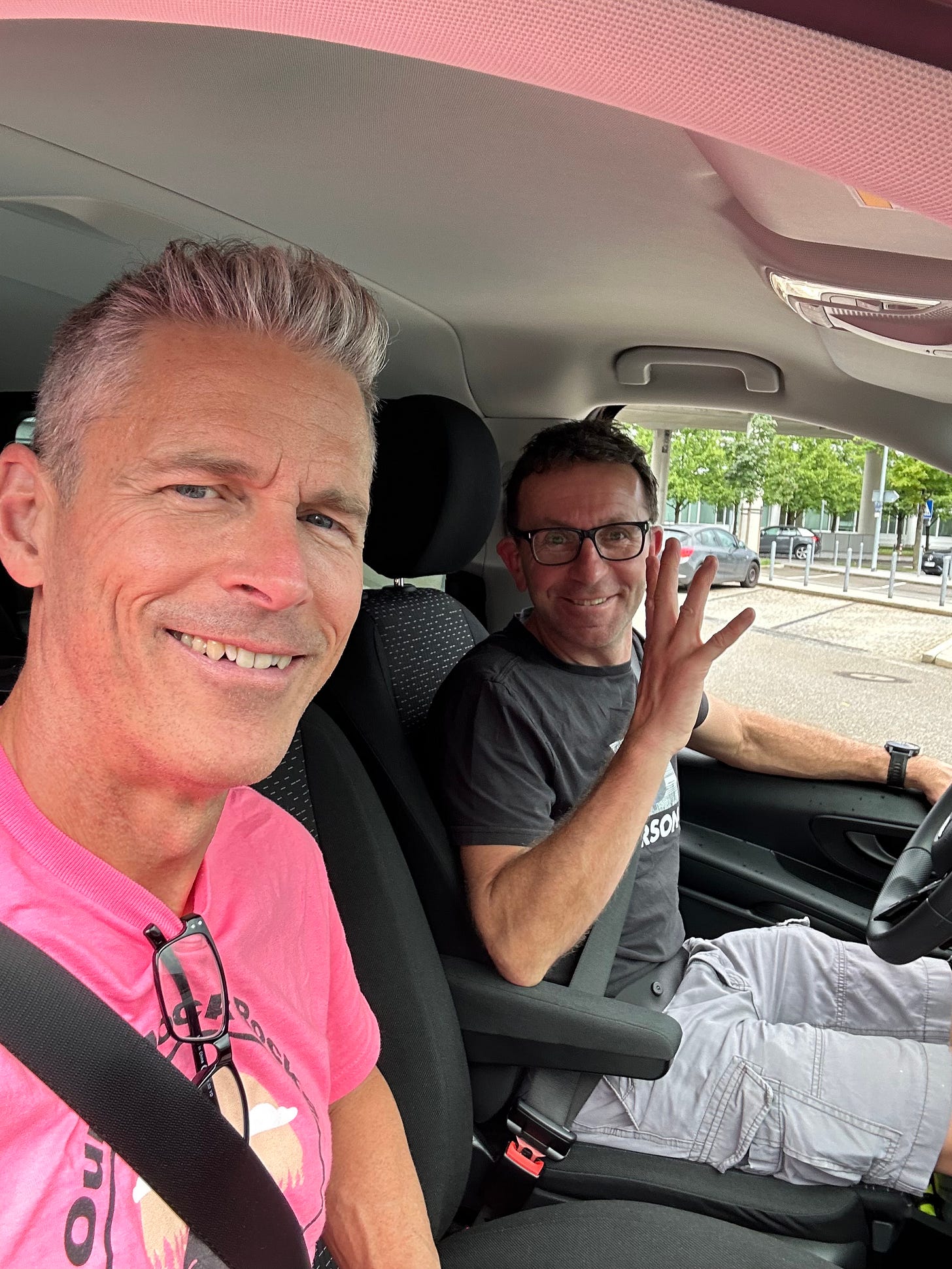
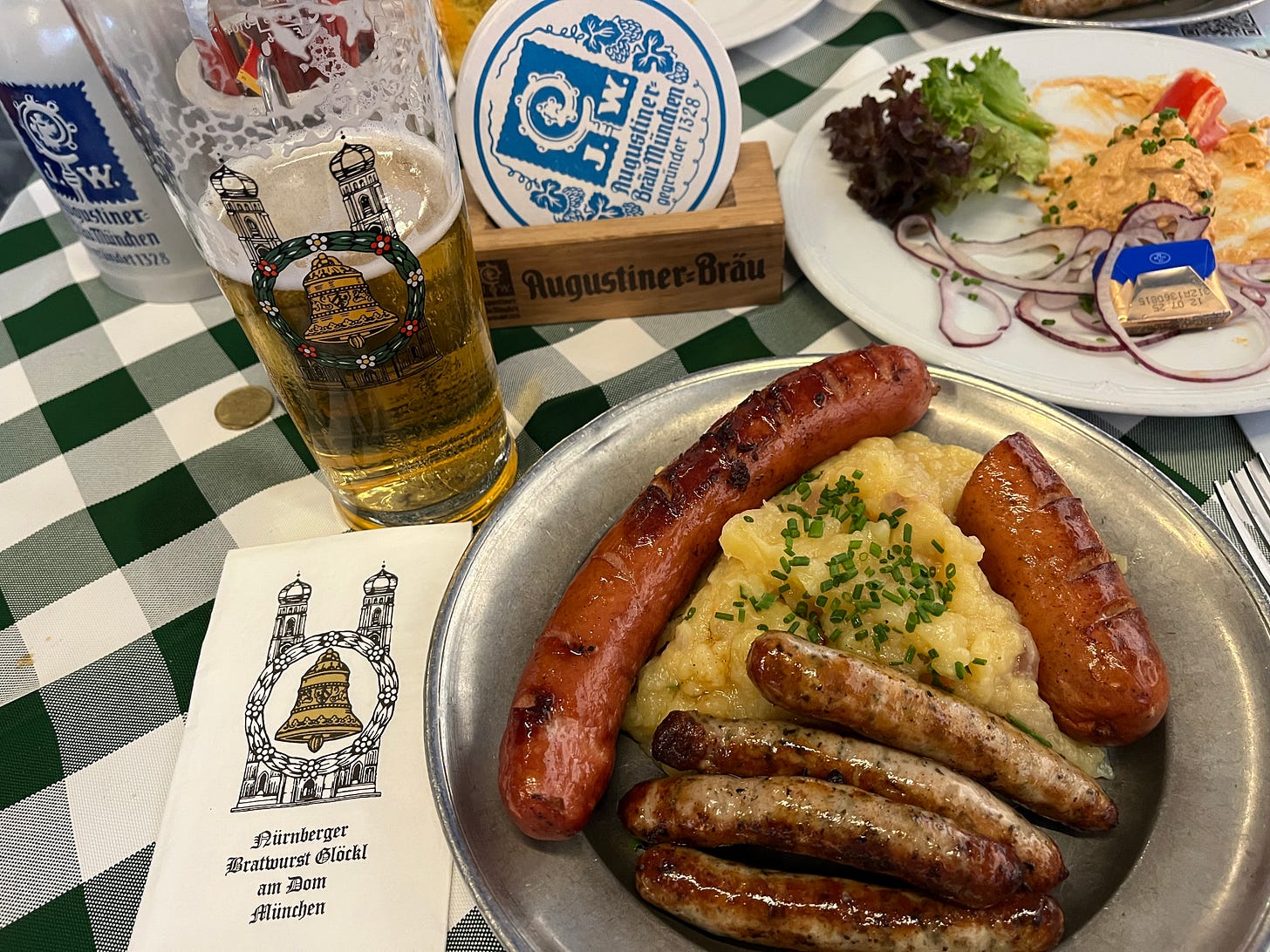

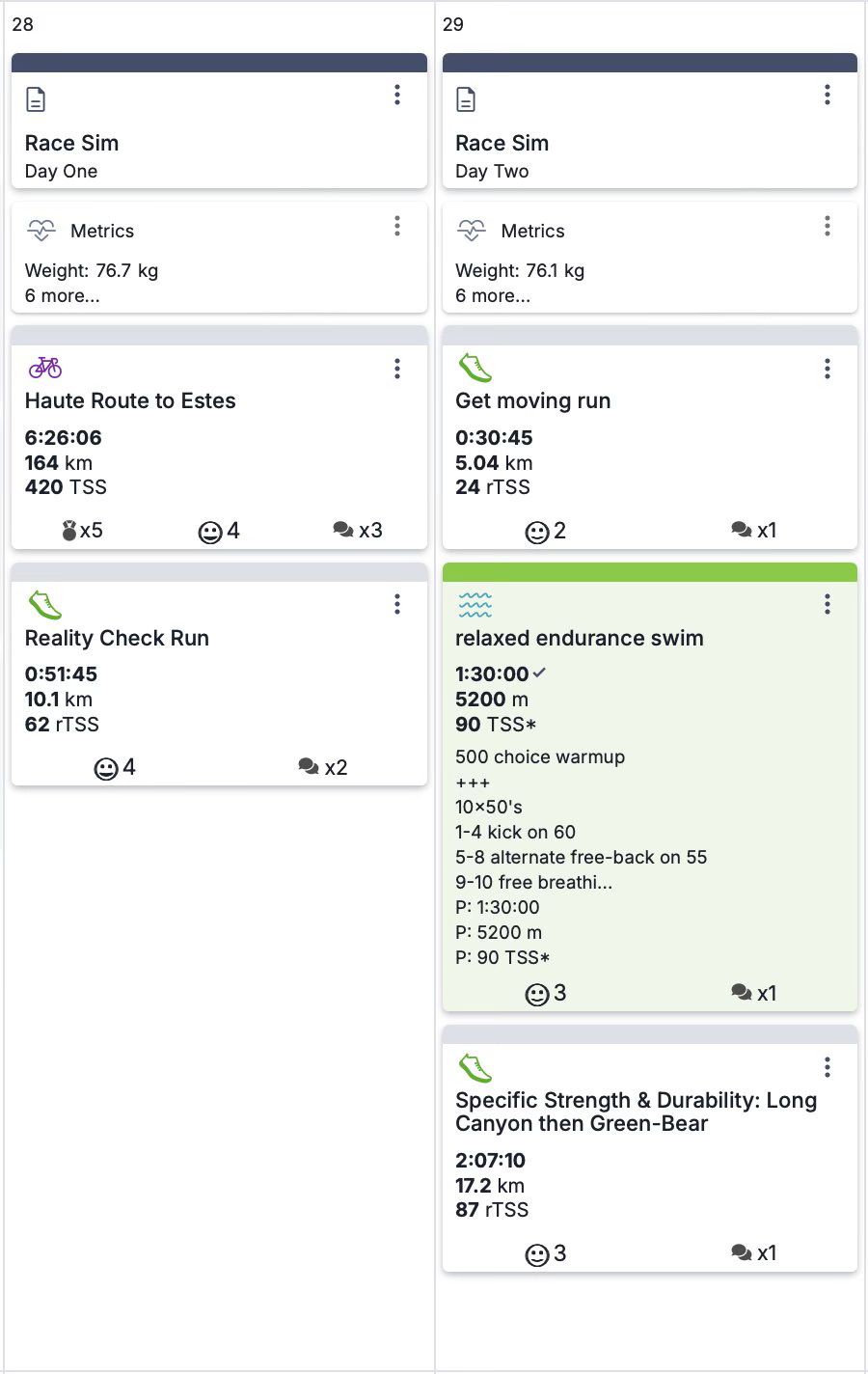

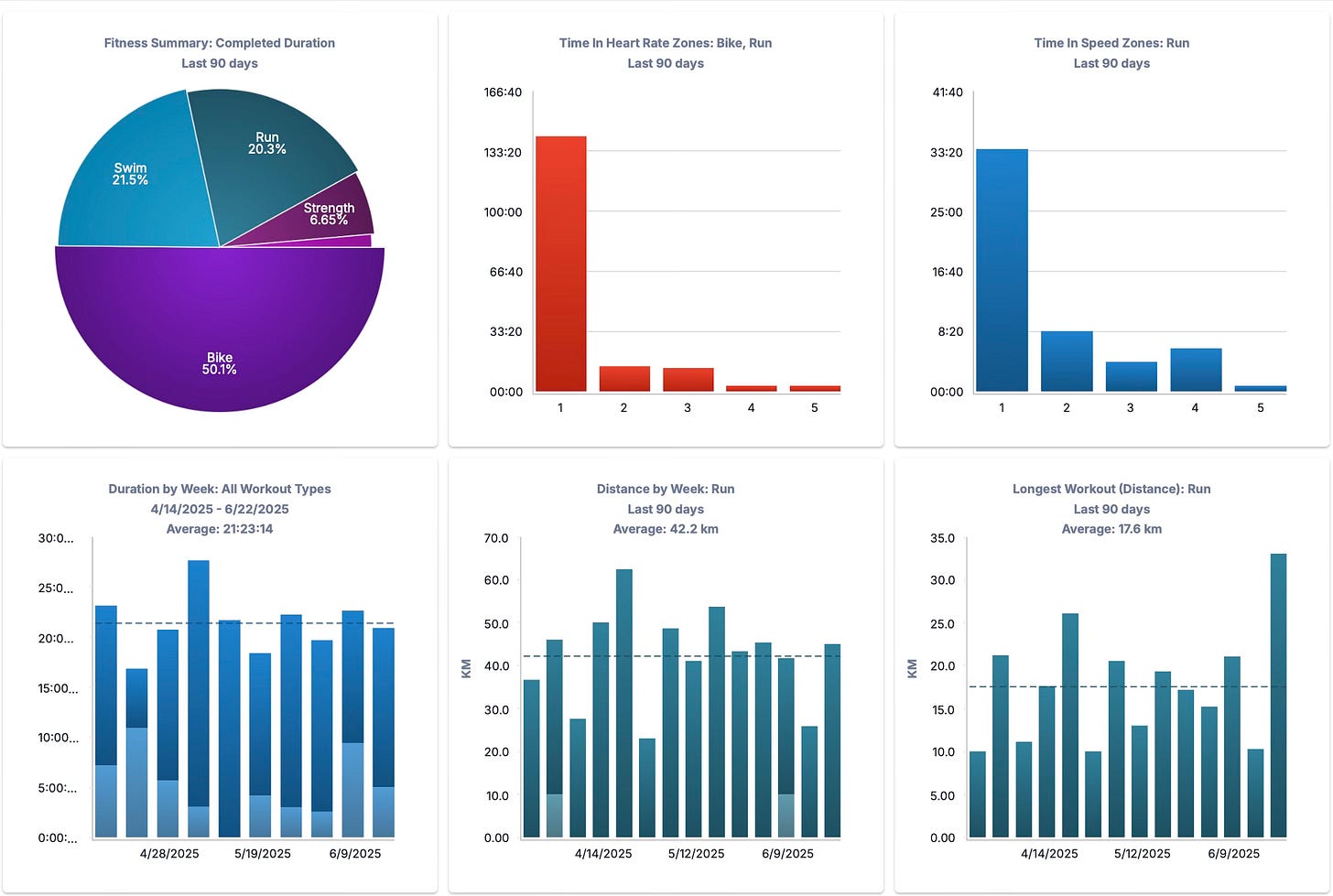
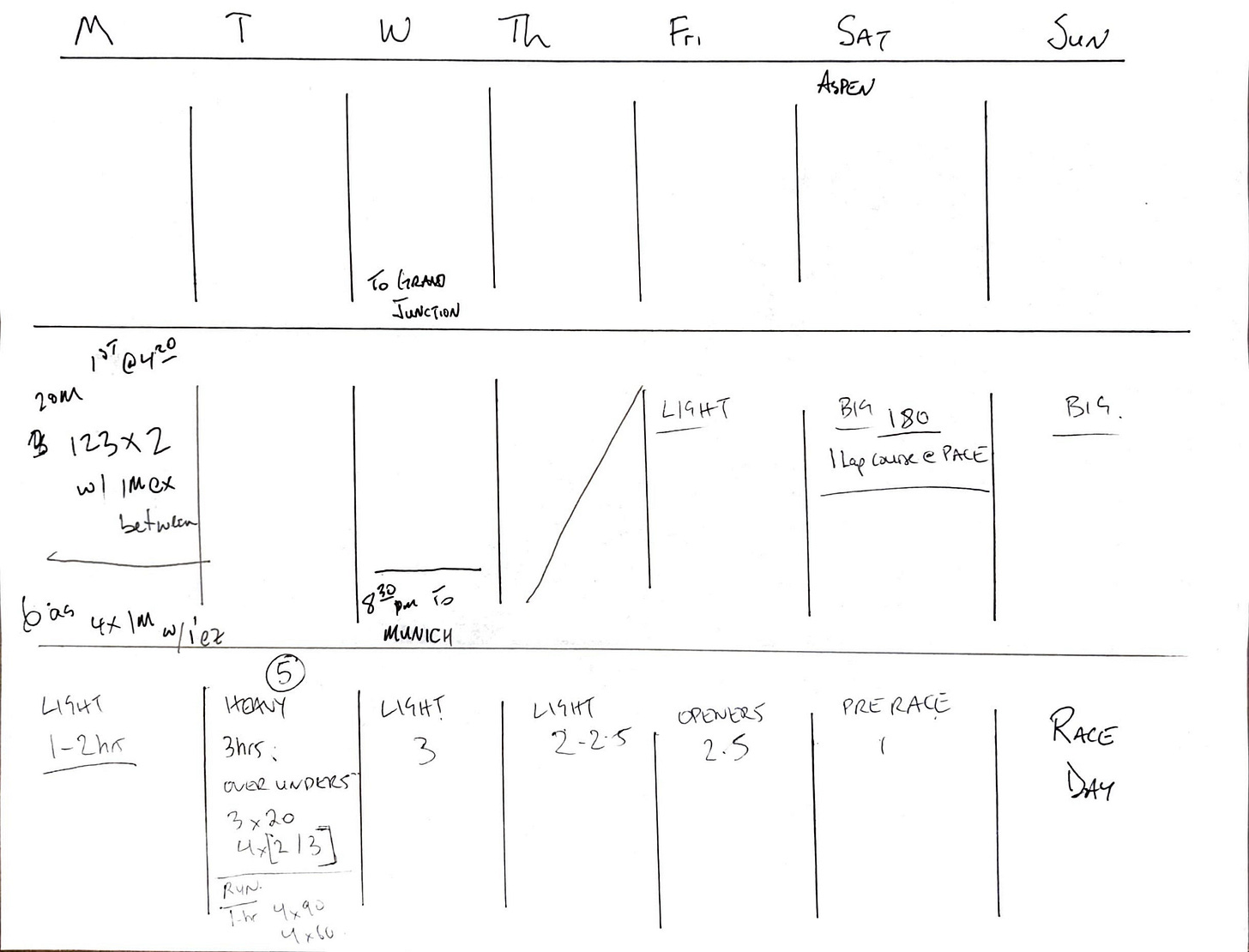

“German food scares me”. I’m going to put that on the wall of quotes! Anna’s brother lives in Ulm and the sausage / bread combination always leaves her scarred after a ski trip
“The course was short”. Your son is a competitive beast